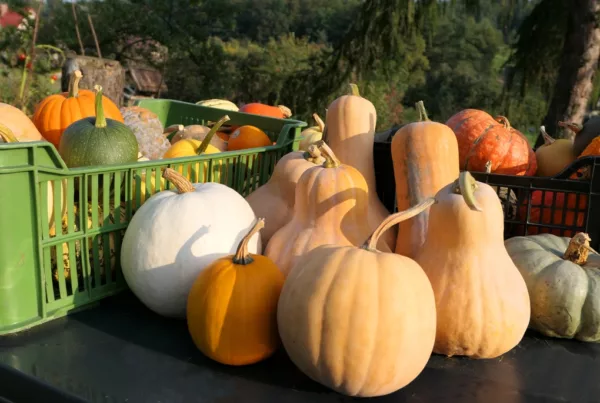Written by Kristina Hicks-Hamblin
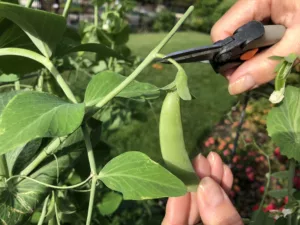 Are you wondering how many peas to sow per square foot in your raised beds? When growing peas according to the Square Foot Gardening Method, there’s a precise number of seeds to plant per grid section for a bountiful and healthy harvest of plump green pods.
Are you wondering how many peas to sow per square foot in your raised beds? When growing peas according to the Square Foot Gardening Method, there’s a precise number of seeds to plant per grid section for a bountiful and healthy harvest of plump green pods.
Keep reading to learn how many to sow!
But first, let’s take a quick look at why we should be motivated to grow this way in the first place.
Why Grow Peas with Square Foot Spacing?
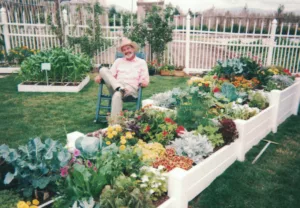
Mel Bartholomew, the creator and founder of Square Foot Gardening.
Sowing these round, green seeds using a square foot density is a smart choice – this permits gardeners to maximize their harvest while minimizing space, energy, and resources.
This gardening system was developed by Mel Bartholomew, creator of the SFG Method.
Mel didn’t just find the best spacing for garden peas – he calculated the optimum square foot spacing for all the common crops you might want to grow in your backyard!
When you grow raised bed crops following this Method, you’ll know you’re using a technique that is tried and true, offering you the peace of mind of healthy, homegrown food with less time spent weeding and working the soil.
How Many Peas to Grow Per Square Foot?
Here’s the answer you’ve been looking for: according to the SFG Method, sow these seeds eight per square-foot section of your raised bed.
Now that you know this answer, you’ll want to decide how to lay out the eight seeds within the section.
Some crop spacings have a definite best arrangement – when you plant four per section, as with leaf lettuce, it’s pretty straightforward! In that case you can easily divide a grid section into four equal parts and plant the lettuce in the center of each division.
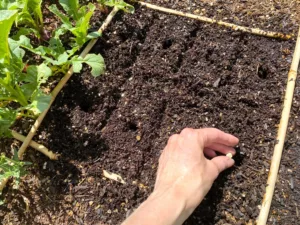
These legumes are grown eight per square foot. Photo by Kristina Hicks-Hamblin.
But there are more ways than one to divide a square into eight equal sections. However, keep in mind that the important part is that the seeds should be sown at least three inches apart.
Here’s how I get eight, well-spaced holes in my grid section:
First I use my finger to divide the section into four equal parts (as with the leaf lettuce, mentioned above). Next I draw two vertical lines to create eight rectangles.
Then in the center of each of those eight rectangles, I poke a single hole, approximately three inches apart from each other.
Now the holes are ready for seeding!
More Tips for Growing Peas in the SFG
-
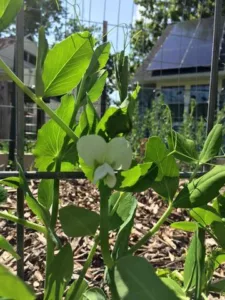
Tall varieties of legumes will require trellising.
If this is your first time growing legumes in your raised bed, I recommend you dip the seeds in inoculant before sowing them. This will result in a heartier crop.
- Drop the seeds in holes that are around one-inch deep. Pea seeds are big, so require deeper holes than smaller seeds like radishes or carrots. After placing the seeds in the holes, fill in with Mel’s Mix and gently pat the soil to ensure good contact.
- Water after sowing, and keep moist while the seeds germinate. You may need to water daily or every other day until the plants get established if rain is scarce.
- Sow fall crops eight to ten weeks before your first average frost. When gardening in spring time, plant seeds four to six weeks before your last spring frost. These legumes grow best in cool weather, so following these planting guidelines will give your crops enough time to grow while conditions are ideal.
- Make sure to check your seed packet to see how tall the variety grows – some of these legumes require trellising, while others are shorter and bushy, requiring no support.
These tips should get you well on your way to growing a gorgeous crop of tasty garden peas, but why not increase your knowledge of Mel’s Method?



